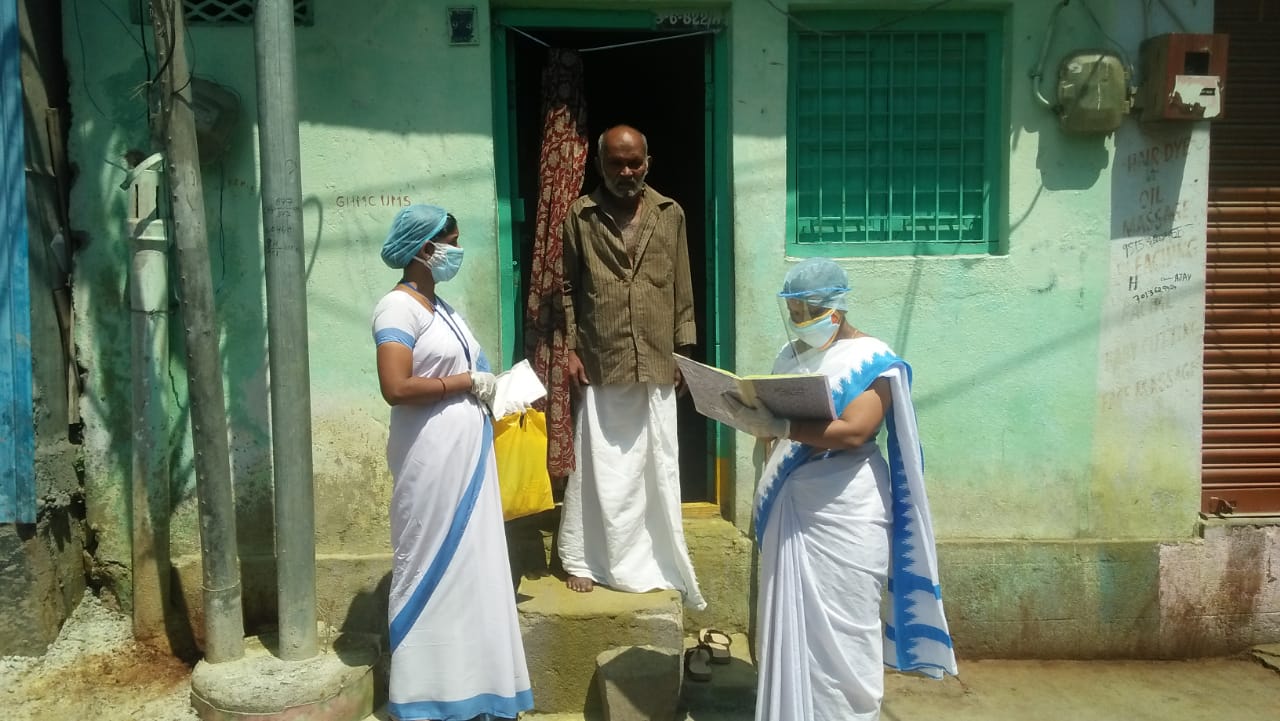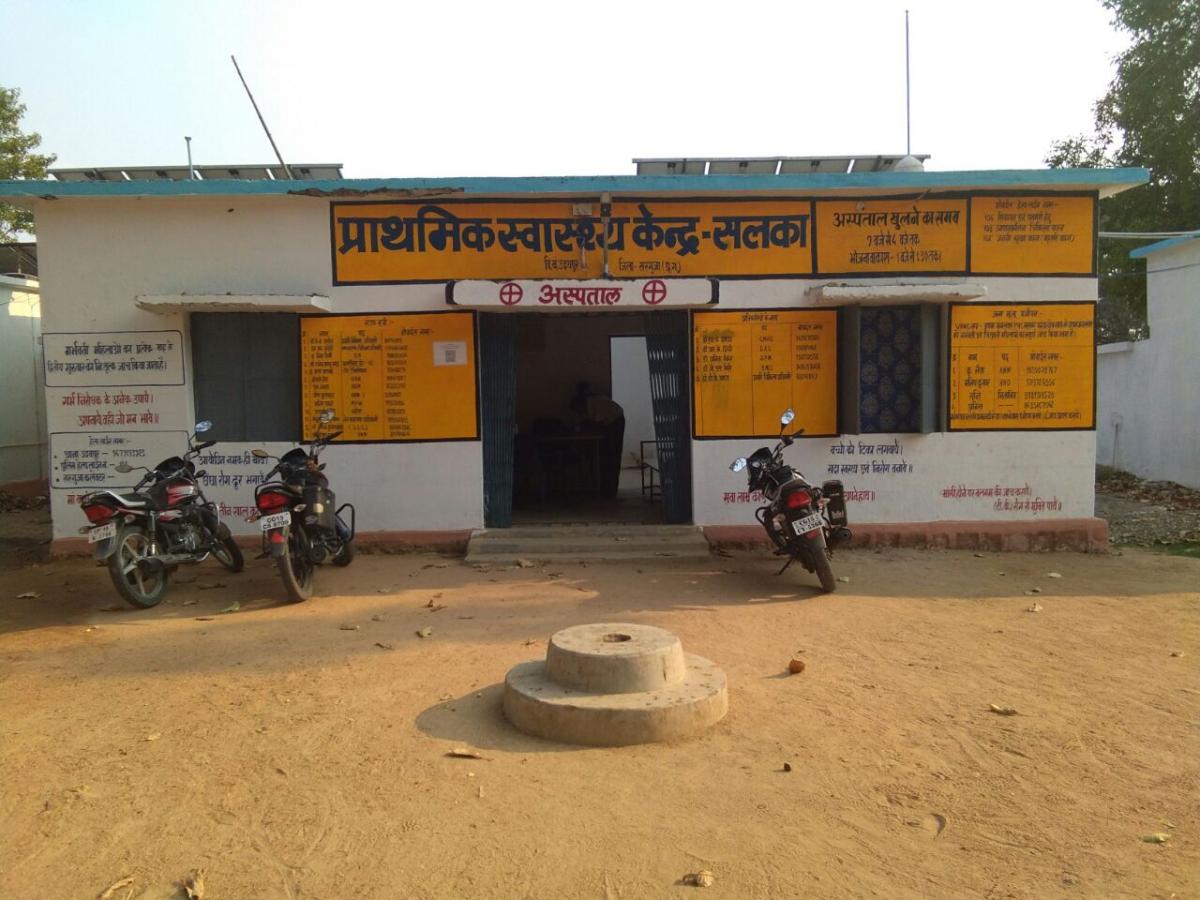Climate-smart recovery for India’s health sector
Disha Shetty
 ASHA workers on duty during the survey phase in June 2020 in Hyderabad. Photo by T Yadamma
ASHA workers on duty during the survey phase in June 2020 in Hyderabad. Photo by T Yadamma
As India recovers from the impact of the Covid-19 pandemic, there is a need for the healthcare sector to also prepare for the climate change crisis. Climate change is set to change patterns of infectious diseases, make zoonoses more common, affect nutrient quality of crops, as well as lead to rise in injuries and deaths due to extreme weather events.
India’s union budget this year took some steps in the right direction by earmarking Rs 64,180 crore to be spent over the next six years to bolster health and wellness centres (HWCs), strengthen the National Centre for Disease Control, and other activities. But much more can be done to deliver both health and climate benefits.
The health sector itself is looking to understand the ways in which this can be done, according to insights from a recent survey by Healthy Energy Initiative India (HEI), a collaboration of health professionals, organizations and researchers. Of the 3,062 community health workers, doctors, nurses and health administrators surveyed between August and December 2020, 93% said they were aware of the impact of climate change, 81% knew the drivers behind it, and 69% were aware that climate change affected health. Most wanted to be a part of the change and get a seat at the table where decisions are made.Potential to solarize health centres

The healthcare sector is a large carbon emitter and the HEI survey found that professionals believed that there is room to reduce energy consumption by putting in more energy efficient transport, among other things, in place for patients. At the same time many sections of the sector are starved for basics.
A 2017 study by Council on Energy, Environment and Water (CEEW) in Chhattisgarh found that roughly 4% Primary Health Centers (PHCs) were unelectrified, presenting a huge opportunity for solar energy to fill the gap. Doing so will also help improve the delivery of maternal and child health services, the study found. Other initiatives across states like Jharkhand and Assam show that a decentralized model of energy access can prepare rural hospitals to fight pandemics and emergencies.
Drawing from the CEEW study, in a letter to the government in April 2020, industry leaders pointed to how India’s 39,000 unelectrified health sub-centres serving nearly 200 million people could be electrified for as little as Rs 27 ($0.37) per person.
While there is a huge potential, Sunil Mani, the CEEW study’s co-author pointed out, the budget allocation this year has not kept pace. “We are doing great in terms of our solar target but there is a still a lot that needs to be done on the ground. There are repercussions as well so we have to be careful about those things.” Moving towards renewable energy will also be crucial if India wants to clean up its toxic air.
Involve communities to deal with air pollution
India is home to some of the world’s most polluted cities. This pollution has been linked to maternal and child health,rising cancer rates and respiratory illnesses.
Cleaning up the country’s air is both an opportunity to improve health locally, and carbon emissions globally, delivering dual benefits. There is a need to create inclusive health impact mitigation plans, ideally with public participation.
The approach to dealing with air pollution has so far been technical and fragmented, according to Shweta Narayan, a researcher and activist who is also associated with HEI. “I have not seen any element of public participation. They are the allies that are being missed out. We either villainize them or completely miss them out,” Narayan said. She also pointed out to the lack of health impact mitigation plans a collaborative approach that recognizes the connections between plants, animals and their shared environment.
More emphasis on One Health model
Acknowledging the growing importance of One Health – a collaborative approach that recognizes the connections between plants, animals and their shared environment – India’s budget this year made a provision to create a national One Health institute. Abi Vanak, an ecologist at the Ashoka Trust for Research in Ecology and Environment called this a welcome move and emphasized the need for an interdisciplinary approach at all institutions.
He called for a framework that cuts across the ministries and identifies appropriate linkages. “It (the framework) would look at the missing links between ministry of health, environment, water, agriculture, and such,” Vanak said. “We need to have this fully integrated, interdisciplinary framework to tackle complex modern realities, including the impact of climate change,” he explained. Vanak also pointed out that Adivasi communities tend to be worst hit by zoonoses but they are also some of the most poorly served communities in terms of PHCs.
Bolstering India’s primary care and district hospitals
To deal with the impacts of climate change, India will need both a good primary healthcare system as well as well-equipped district hospitals, according to Srinath Reddy, president of Public Health Foundation of India. “We will have to look at expanding our health workforce and to change models of care by involving available non-physician healthcare providers,” he said.
And the foot soldiers – Accredited Social Health Activists (ASHAs) – will have a huge role to play in maintaining the health of our health system.
Considered volunteers by the health system, ASHAs have been credited with improving maternal and child health outcomes in India in recent years. These 1.4 million workers will have a frontline role in India’s response to extreme climate events, and will need better support from the health care system.
Bhanupriya Rao, researcher and founder of BehanBox that focuses on gender journalism, along with a team of researchers, interviewed 100 ASHAs across 10 states (apart from other healthcare workers), towards the end of 2020. They found that during the pandemic ASHAs were made to do multiple overlapping surveys, sent to contact trace with little training, and were in-charge of awareness campaigns. Despite their critical role in containing the spread of Covid-19, their compensation was delayed in several states.
“The work of an ASHA worker is seen as an extension of housework despite them doing everything for the healthcare system,” said Rao. She cited how in some states they were called ASHA bahu (daughter-in-law) or didi (sister) and their labour devalued. Rao called this a “complete invisibilization of workforce” that is crucial to maintaining our health system. The 1.4 million ASHA workers will also have a frontline role in India’s response to extreme climate events and Reddy agreed that they should be seen as a part of the health system and paid better.
At the crux of India’s response will have to be the understanding that climate change and its impacts on health is not a problem of the future but one that needs solutions now, with communities around the country already bearing a brunt of it. And as the HEI survey reveals, the government already has willing allies in the health system to push forward with the changes.

Disha Shetty is an independent science writer based in Pune, Maharashtra. She is one of the four candidates selected by WRI India to contribute to its Climate-smart Covid-19 Recovery project.
Disclaimer: This is an independent article written by Disha Shetty and WRI India does not necessarily subscribe to the views reflected in it. The purpose of this article is to bolster the need for a climate-smart Covid-19 recovery model, and initiate a dialogue around it.

